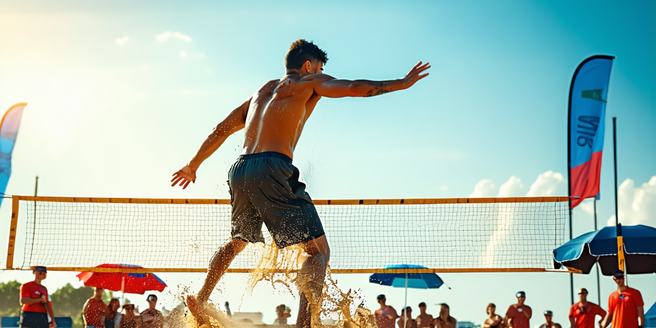
Understanding Heat’s Impact on Athletes
Athletes participating in beach sports are exposed to high temperatures and direct sunlight, which can significantly affect their performance. Heat can lead to dehydration, heat cramps, heat exhaustion, or even heat stroke if not managed properly. The body’s core temperature rises, increasing the heart rate and causing additional strain on cardiovascular systems. Proper acclimatization and attention to signs of overheating are crucial. Awareness and monitoring can prevent serious health risks. Coaches and athletes must understand how heat impacts performance, and integrate effective heat management strategies to maintain optimal physical output. Hydration, shade, and appropriate rest intervals play a vital role in combatting heat-related adverse effects.
Choosing the Right Gear for Sun Protection
Choosing the right gear is essential for athletes participating in beach sports to mitigate the harsh effects of the sun. Wearing light-colored, breathable clothing made from UV-protective fabric can help reduce UV exposure. A wide-brimmed hat and polarized sunglasses provide additional protection for the face and eyes. Furthermore, applying broad-spectrum sunscreen that is sweat-proof is crucial for exposed skin. It’s not just about comfort; preventive measures protect against potential skin damage and long-term health issues like skin cancer. Strategically selecting and utilizing protective gear helps athletes perform better by keeping their body temperatures regulated and reducing the risk of heat-related ailments.
Optimal Hydration Strategies for Performance
Maintaining hydration is paramount for athletes, especially in hot climates. Optimal strategies for hydration begin well before the event, with athletes gradually increasing fluid intake days prior. On the day of the event, consistent sips of electrolyte-rich fluids are recommended to replenish lost minerals and maintain energy levels. Avoiding both drinking too much too quickly and excessive caffeine or alcohol is important as these can lead to dehydration. Post-event hydration helps in recovery, restoring balance, and preparing the body for future performance. Tracking weight loss during activity can aid in calculating proper fluid replacement, ensuring athletes remain hydrated and at peak performance.
Acclimatization Techniques for Beach Sports
Acclimatizing to warm conditions can significantly improve an athlete’s performance in beach sports. Gradually increasing exposure to heat during training sessions allows the body to adapt, improving sweat rate and efficiency which aids in temperature regulation. It’s important to monitor individual responses to heat to ensure optimal adaptation. Starting at low intensity and gradually advancing intensity levels over one to two weeks is advisable. This adaptation leads to more effective cooling mechanisms that can delay fatigue and reduce the risk of heat-related illnesses. Athletes must also adjust nutrition and hydration based on environmental changes to support the acclimatization process, ultimately enhancing endurance and performance.
Monitoring Signs of Heat Exhaustion and Stroke
Heat exhaustion and heat stroke are serious conditions that require vigilance and prompt action. Early signs include excessive sweating, fatigue, nausea, and confusion. More severe symptoms can progress to rapid heartbeat, dizziness, unconsciousness, and hot, dry skin indicating potential heat stroke. Immediate action should reduce core temperature, which includes moving the athlete to a cooler environment, using ice packs, and ensuring hydration with fluids containing electrolytes. Proactive monitoring, especially during intense activity or high temperatures, can prevent these conditions from escalating. Coaches, trainers, and teammates should be trained to recognize symptoms and administer appropriate first aid protocols.
Recovery Practices for Hot Weather Athletics
After intense athletic activity in hot weather, recovery practices are crucial for restoring the body. Post-activity hydration with electrolyte-rich fluids replenishes lost minerals and fluids. Cooling techniques, such as ice baths or cool showers, help lower core body temperature and reduce muscle soreness. Stretching and moderate activity support muscle recovery and reduce the risk of injury. Nutrition plays a significant role; incorporating proteins and carbohydrates aids in quick glycogen restoration. Adequate rest and a balanced intake of nutrients expedite the recovery process, preparing athletes for future training sessions more effectively and reducing overall fatigue.
